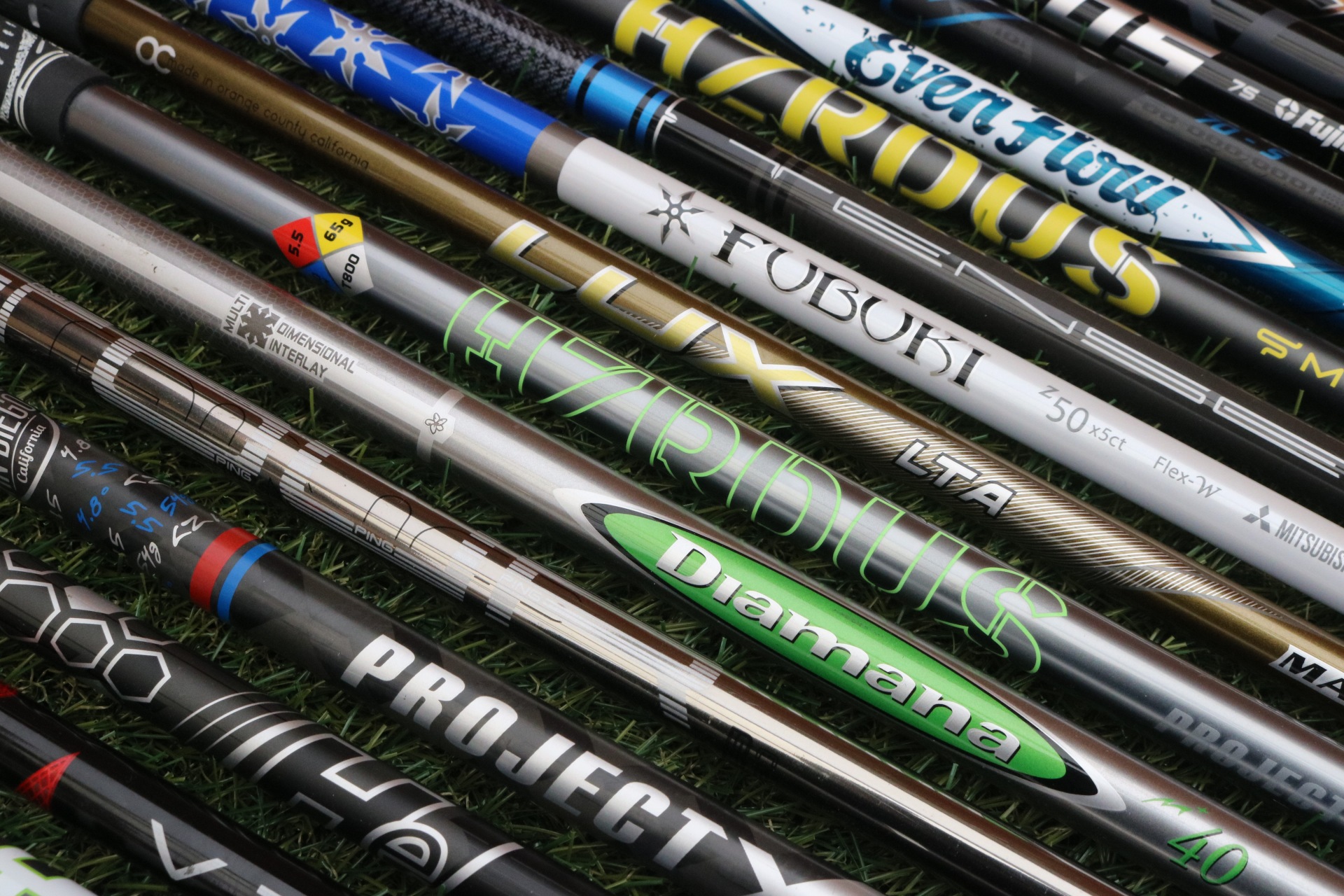Introduction
There are so many shafts to choose from. Different brands, models, colours, dimensions, weights, flexes, torques, bend profiles and not to mention different prices! How are you supposed to pick the right shaft? How are you supposed to know that you’ve got the right shaft for your swing? In this 2-part series we are going to talk about basic shaft specifications, fine tuning and finally help you figure out how to select the correct shaft for you.
The 3 most import basic shaft specifications are shaft dimensions, weight and flex.
Dimensions
The first shaft specification to consider are the actual dimensionsof the shaft. If you’re buying shafts on your own, you want to be aware of the shaft dimensions. If you’re going to a fitting, the fitter will have the right shafts for the head that you are fitting for.
Iron Shaft Dimensions
Iron shafts have two main sizes, 0.370” or otherwise known as a parallel tip. 0.355” or otherwise known as a tapered tip is the other size option. Ideally these two different tip sizes should go into two different hosel sizes that would match up. This makes club assembly much easier! However, it is possible to match up a shaft to a different sized hosel. For example, a 355-tip shaft can be installed into a 370 hosel. All you would need is a brass shim. Alternatively, a 370-tip shaft can be installed into a 355 hosel, however, you are going to need to widen the inside of the hosel by reaming out the inside. This is obviously the case for steel shafts. With graphite shafts you can sand down the shaft tip to fit the smaller hosel.
Wood Shaft Dimensions
Woods also have two main sizes, 0.335″ which is now the standard for wood shafts. Most shafts manufactured within the last five years will be a 335 shaft. 0.350″ shafts are typically older shafts. A 335 shaft can be installed into a 350 hosel, you just need a brass shim. However, there is no way to install a 350 shaft into a 335 wood hosel.
Weight
Weight is the static weight of a golf shaft. Golf shafts can range from 30-gram graphite shafts to 130 gram steel shafts.
As explained in shaft flex: What you should know to improve your game, the basic idea with weight is, the lighter the shaft, the easier it is to swing. The heavier the shaft, the more control you get. So, shaft selection as it relates to weight is a balancing act. You should be able to swing the club easily and swing it quickly at the same time, yet still have control during your swing. This is the trade-off between distance and control.
Balance point
The other discussion around weight is balance or balance point. If you are going for a fitting or trying out different shafts, you want to know the balance point of the shaft. Does the shaft have a neutral balance point or a counterbalanced shaft? Counterbalanced shafts are shafts where weight is focused on the butt end of the shaft. This changes the head feel and the club feels lighter.
Two use cases for using counterbalanced shafts:
- You want to extend the length of your clubs. Using a counterbalance shaft will negate some of the weight and the swing weight will feel more normalized. Using a neutral balance point shaft after extending the length of your clubs will result in a heavier swing weight.
- You wanted to play with heavier headed clubs. Using a counterbalanced shaft will allow you to do so without having too heavy swing weights.
Playing with the same iron head and trying both a neutral balance point shaft vs a counterbalanced shaft will have an impact on how you swing the club.
Flex
Shaft flex relates to how much the shaft flexes during the golf swing. Using the correct flex will give you greater consistency, help you to hit straighter and improve your score. Flex options include regular flex, stiff flex, ladies, or senior flex. Knowing your swing speed and swing tempo goes a long way to help you select the right flex. Your personal preference, what flex you like the feel of. Continuity throughout your bag, the flex of the rest of your clubs and ultimately what allows you to make the most consistent swing and gives you the most consistent results.
Understanding these basic shaft specifications will go a long way to help you choose the correct shaft for you.

